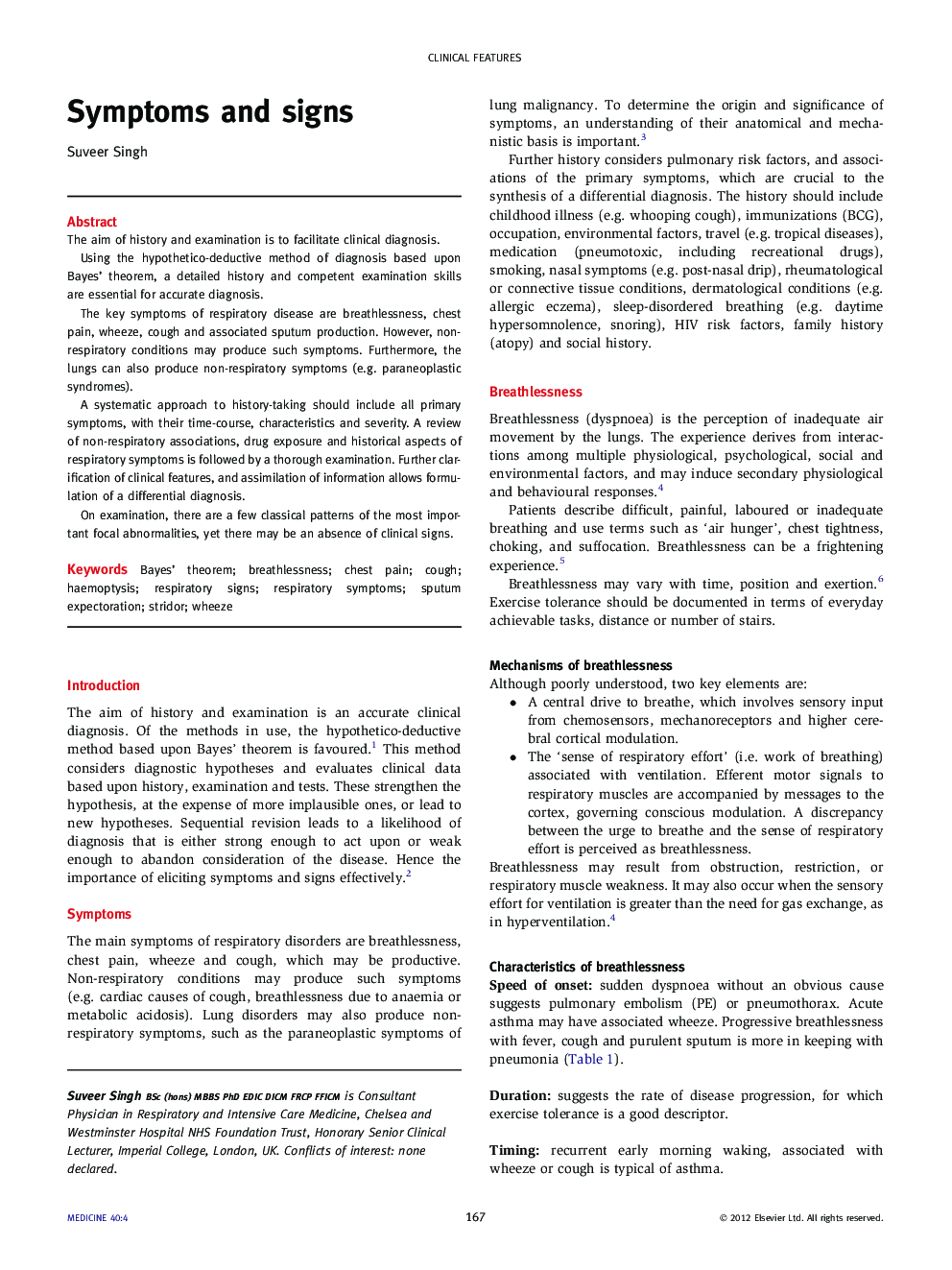| Article ID | Journal | Published Year | Pages | File Type |
|---|---|---|---|---|
| 3804087 | Medicine | 2012 | 6 Pages |
The aim of history and examination is to facilitate clinical diagnosis.Using the hypothetico-deductive method of diagnosis based upon Bayes' theorem, a detailed history and competent examination skills are essential for accurate diagnosis.The key symptoms of respiratory disease are breathlessness, chest pain, wheeze, cough and associated sputum production. However, non-respiratory conditions may produce such symptoms. Furthermore, the lungs can also produce non-respiratory symptoms (e.g. paraneoplastic syndromes).A systematic approach to history-taking should include all primary symptoms, with their time-course, characteristics and severity. A review of non-respiratory associations, drug exposure and historical aspects of respiratory symptoms is followed by a thorough examination. Further clarification of clinical features, and assimilation of information allows formulation of a differential diagnosis.On examination, there are a few classical patterns of the most important focal abnormalities, yet there may be an absence of clinical signs.
